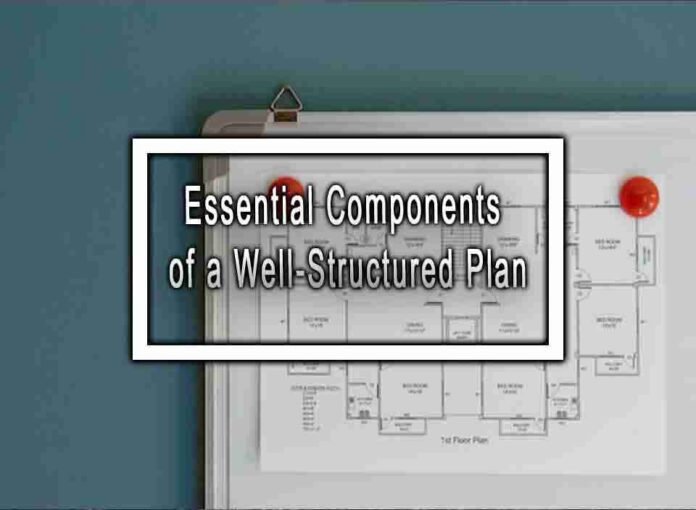A well-structured plan is essential for effectively achieving goals, managing projects, and organizing tasks. Whether it’s a business project, personal goal, or any other endeavor, the following components contribute to a well-structured plan:
Clear Objective and Purpose:
- Define the main goal or purpose of the plan. What do you aim to achieve? Having a clear objective guides all the subsequent steps.
Scope and Boundaries:
- Define the scope of the plan by outlining what’s included and what’s not. Setting boundaries helps prevent scope creep and keeps the plan focused.
Detailed Tasks and Activities:
- Break down the main goal into smaller, manageable tasks or activities. These should be specific, actionable, and achievable steps.
Timeline and Deadlines:
- Assign realistic timelines and deadlines for each task. Creating a schedule helps track progress and ensures that the plan stays on track.

Resources and Requirements:
- Identify the resources (people, tools, materials) needed for each task. This helps ensure that you have everything necessary to complete the plan successfully.
Roles and Responsibilities:
- Clearly define who is responsible for each task or activity. Assign roles and ensure that everyone knows their responsibilities.
Budget and Costs:
- If applicable, outline the budget required for the plan. This includes costs for resources, materials, and any other expenses.
Risk Assessment and Mitigation:
- Identify potential risks or obstacles that could hinder the plan’s success. Develop strategies to mitigate these risks and minimize their impact.
Communication Plan:
- Determine how information will be shared among team members or stakeholders. Communication is crucial for keeping everyone informed and aligned.
Progress Tracking and Monitoring:
- Establish a method to track progress, whether it’s through regular meetings, reports, or digital tools. Monitoring progress helps identify any deviations from the plan.
Contingency Plan:
- Have a backup plan in case things don’t go as expected. A contingency plan helps you navigate unexpected challenges.
Evaluation and Review:
- Define points in the plan when you’ll evaluate its effectiveness. Regular reviews allow you to make necessary adjustments and improvements.
Feedback and Input:
- Encourage feedback from team members or stakeholders. Their insights can provide valuable perspectives and enhance the plan’s quality.
Documentation:
- Keep thorough records of the plan, including its components, changes, decisions, and outcomes. Documentation ensures clarity and accountability.
Flexibility and Adaptability:
- While having a structured plan is important, be open to adapting it when necessary due to changing circumstances or new insights.
A well-structured plan provides a roadmap for success, reduces uncertainty, and enhances the likelihood of achieving desired outcomes. It serves as a guide for execution, communication, and decision-making throughout the duration of the project or goal.











